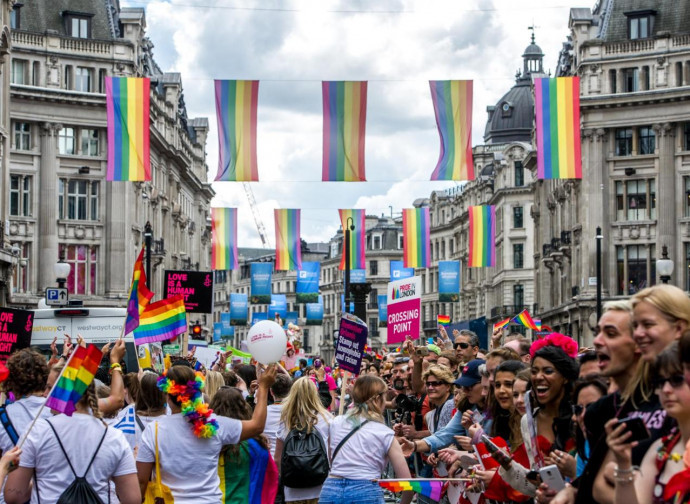British data confirms homosexuality is not genetic
The latest report on the British population shows that in five years the number of young people who identify as LGB has risen from 4.4% to 10.4%. Bisexuals in particular have increased. Strong generational differences. In short, homosexuality is the result of conditioning.

The Office for National Statistics has published its annual population report. Let's look at the section on sexual orientation: "In 2023, 3.8% of the UK's household population aged 16 and over identified as lesbian, gay or bisexual (LGB), up from 2.2% in 2018. Young people were more likely to identify as LGB than older people, with around 1 in 10 (10.4%) of 16-24 year olds identifying as LGB, compared to around 1 in 100 (0.9%) of those aged 65 and over. LGB 16-24 year olds were 4.4% in 2018. Hence, there is a 6 percentage point increase in the total population in 5 years.
What do these data tell us? That homosexuality is not genetic, it is not a natural variable of sexual orientation, but the result of conditioning. If it were a genetic/natural fact, we would have the same proportion of homosexuals over time. Instead, we find that the number of young homosexuals has increased by 6 percentage points in just five years. The same applies to the very marked difference in LGB proportions between the young and the old. If homosexuality were a natural condition, because it is innate, we should find the same percentage of homosexuals in each age group. But this is not the case. And other statistics in other countries confirm this: the largest proportion of homosexuals is to be found in the youth group.
We then respond to the usual objection that young people are more likely to declare their homosexuality than older people because the latter have grown up in a social environment that stigmatises homosexuality and are therefore more familiar with the subject. This objection is easily overcome by remembering that the demoscopic survey is anonymous. Therefore, the respondents, including those of 'senior age' and above, were able to answer in complete freedom and without feeling influenced.
Returning to the young-old divide. Why are there more LGB young people than older people? Because homosexuality has recently become a social phenomenon. And who is more influenced by fashion? Who are the most transgressive? Young people. That is why the proportion of homosexuals is higher among young people. Moreover, the increase in the number of LGB people between 2018 and 2023 mainly concerns those who identify as both heterosexual and homosexual, i.e. bisexual. Proof that for many, homosexuality is a desire to experience something new without leaving the old state behind. Further proof that homosexuality is a social construct, not a natural inclination. Moreover, even if homosexuality were innate, it would not mean that it is natural, because not everything that is innate is natural.
Another interesting fact is this: "The majority of people who identified as LGB in 2023 had never been married or in a civil partnership (77.2%), compared with 36.8% of people who identified as heterosexual". So the majority of LGB people are not married, unlike heterosexual people. On the one hand, this can be explained by the fact that the largest share of homosexuals is in the youth group, a group that is not inclined to marry even in the heterosexual group, but on the other hand, it can also be explained by the allergy of LGB people to stable unions (cf. D. McWirther - A. Matthews). McWirther - A. Mattison, The male couple, Reward Books, 1984; M. Xiridou, The contribution of steady and casual partnerships to the incidence of HIV infection among homosexual men in Amsterdam, 'Aids', 17 (2003), pp. 1029-1038; A.P. Bell - M.S. Weinberg, Homosexualities: A study of diversity among men and women, Simon & Schuster, New York 1978; E. Goode - R. Troiden, Correlates and accompaniments of promiscuous sex among male homosexuals, 'Psychiatry', 43 (1980), pp. 51-59). This is why, in states where civil unions or homosexual 'marriages' have been legalised, few homosexuals have subsequently entered into civil unions or 'marriages'.
These data confirm that ideology describes a 'reality' which reality then denies.
Hollerich on homosexuality: the Cardinal’s many errors
In an interview with KNA, Hollerich makes several statements on homosexuality, hoping for a change in doctrine. But the cardinal is wrong. He forgets that the Church's teaching is based on natural morals and that there is full agreement between the Old and New Testaments in judging negatively the homosexual condition and acts.


